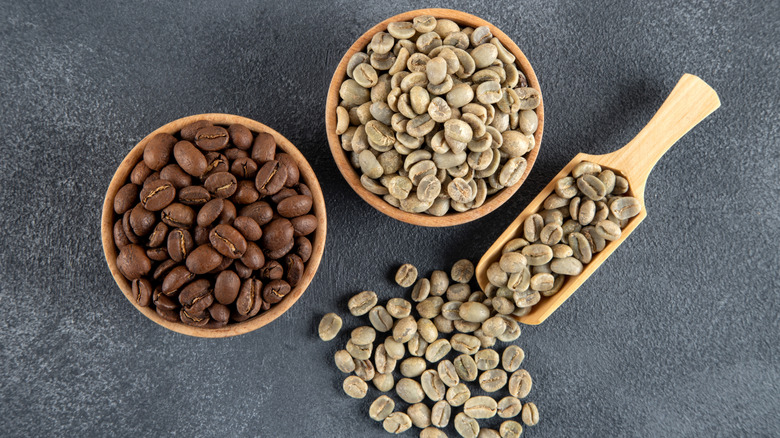The Major Difference Between Green Coffee Beans And The Regular Kind
Having a good cup of coffee is life. Actually, having any type of coffee, whether sub-par or not, is just as satisfactory, in my opinion. Personally, I like to purchase my coffee as grounds, but knowing there are coffee enthusiasts out there who want to do the grinding themselves also makes sense. There's a habitual, ritualistic motion that comes with coffee preparation, and in today's day and age, there's a huge variety of ways to do it. If you've been in the coffee biz for a while, you might've heard of green coffee beans before. For those of you just discovering green coffee beans, you're probably as amazed as I was when I learned about their existence.
Green coffee beans and regular coffee beans might provide a steaming cup of joe when brewed, but that's where the similarities end. The key difference between the two comes down to whether or not they are roasted. While regular coffee beans go through a roasting process before they're packaged, ground, and brewed, green coffee beans remain raw and unroasted, which is reflected in their pale green color.
Other differences between green and black coffee beans
While the fact that green coffee beans are not roasted is the main difference between them and regular coffee beans, some factors like flavor and caffeine levels are also affected. Chlorogenic acid is found in drinks like coffee and wine, but the roasting process removes much of this compound from coffee beans. Since green coffee beans are not roasted, they still contain high quantities of chlorogenic acid, which has been associated with a range of health benefits from helping to maintain normal blood pressure levels and aiding with hunger management to stabilizing blood sugar.
Because green coffee beans don't go through a roasting process like other coffee beans, they also have a noticeable lack of the roasted flavor often associated with coffee. Instead, green coffee beans provide an enjoyable, earthy, and organic flavor. Then, there's the amount of caffeine. While roasted coffee beans can provide a decent caffeine hit (especially if they are only mildly roasted), green coffee beans contain higher amounts of caffeine.

